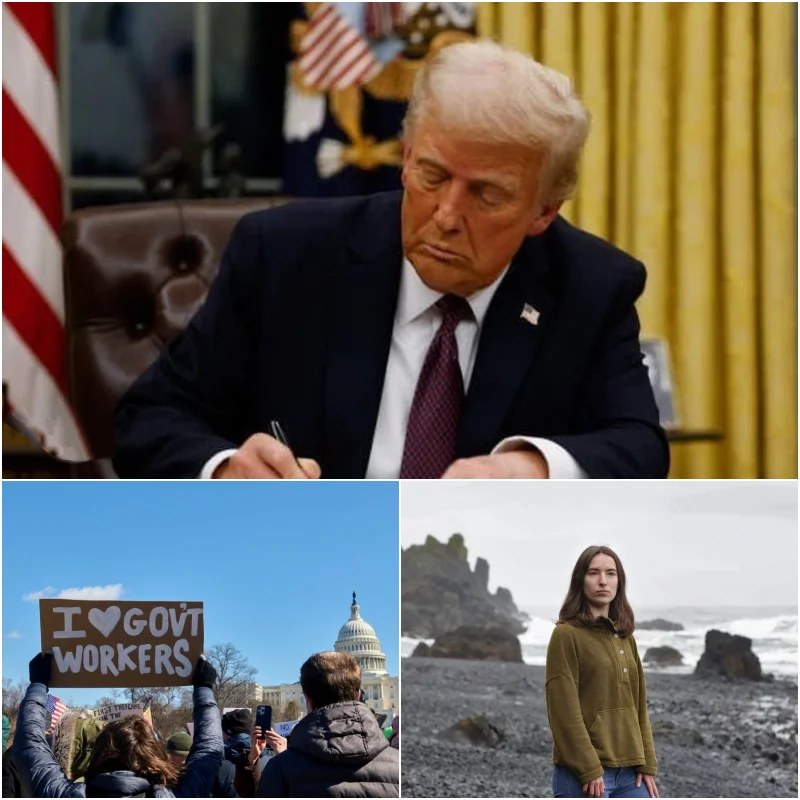

The Trump administration witnessed significant policy shifts that led to widespread layoffs across various industries, leaving many Americans struggling to recover. From federal job cuts to corporate downsizing, the economic landscape during this period changed dramatically. While some saw these layoffs as a necessary move to streamline government operations and promote economic growth, others viewed them as detrimental to working-class stability. This article explores the extent of these layoffs, their causes, and their impact on American families and the economy.
## The Scope of Trump-Era Layoffs

During the Trump administration, layoffs were prevalent across both public and private sectors. These job losses stemmed from policy changes, budget reductions, and trade disputes. Some of the most notable layoff incidents included:
– **Federal Workforce Reductions**: Efforts to shrink government agencies resulted in thousands of job losses in sectors like environmental protection, health services, and administrative functions.
– **Manufacturing and Trade Job Cuts**: Tariffs imposed on imports, particularly from China, led to job losses in industries reliant on global supply chains.
– **Retail and Service Industry Decline**: The rise of e-commerce and the COVID-19 pandemic contributed to store closures and layoffs in major retail chains.
– **Energy Sector Shifts**: Deregulation and shifts in energy policies affected jobs in renewable energy sectors while increasing positions in fossil fuel industries.
These layoffs not only affected individual workers but also had cascading effects on local economies and communities.
## Causes Behind the Layoffs

Several key factors contributed to the layoffs during the Trump administration, including:
### 1. **Government Downsizing**
Trump’s push to reduce the size of the federal government led to job cuts in various agencies. The Environmental Protection Agency (EPA) and the State Department saw significant staff reductions due to budget constraints and restructuring efforts.
### 2. **Trade Policies and Tariffs**
The administration’s trade wars, particularly with China, led to layoffs in industries dependent on exports and imports. Farmers, automotive workers, and manufacturers faced job losses as retaliatory tariffs reduced demand for American goods abroad.
### 3. **Corporate Restructuring and Tax Reforms**
Although the 2017 Tax Cuts and Jobs Act aimed to stimulate economic growth, many corporations used the tax savings for stock buybacks instead of expanding their workforce. This led to stagnant wage growth and continued layoffs in several sectors.
### 4. **COVID-19 Pandemic and Economic Shutdown**
The onset of the COVID-19 pandemic in 2020 accelerated job losses across multiple industries. Government-mandated shutdowns forced businesses to lay off workers, while the lack of a coordinated federal response prolonged economic instability.
## Impact on American Workers and Families

The consequences of these layoffs were severe, affecting millions of Americans. Some of the key impacts included:
### 1. **Financial Instability**
Many families faced financial hardships due to sudden job losses. With limited savings, affected individuals struggled to pay mortgages, medical bills, and daily expenses.
### 2. **Mental and Emotional Strain**
The uncertainty caused by job loss led to increased stress, anxiety, and depression among affected workers. Many struggled with job searches, while others had to transition to lower-paying jobs or gig work.
### 3. **Decline in Local Economies**
Communities that relied on specific industries, such as manufacturing or coal mining, saw significant economic downturns. Local businesses suffered as unemployed residents had less disposable income to spend.
### 4. **Increased Dependence on Government Assistance**
Unemployment benefits, food assistance programs, and emergency relief funds saw higher demand as more Americans sought financial aid. This put additional strain on federal and state resources.
## Political and Social Reactions

The widespread layoffs during the Trump administration sparked strong reactions from both supporters and critics.
– **Supporters’ Perspective**: Many believed that the job cuts were a necessary step toward reducing government bureaucracy, cutting wasteful spending, and making businesses more competitive in the long run.
– **Critics’ Perspective**: Opponents argued that the administration’s policies disproportionately hurt working-class Americans and small businesses while benefiting large corporations and the wealthy.
– **Public Protests and Advocacy**: Labor unions, activists, and political organizations mobilized to demand better job protections, wage increases, and economic relief for affected workers.
## Recovery and Moving Forward
As the country transitioned into a new administration, efforts were made to reverse some of the economic damage caused by the layoffs. Some measures included:
– **Expanding Job Creation Programs**: The government introduced infrastructure projects and green energy initiatives to create new job opportunities.
– **Workforce Training and Education**: Investment in retraining programs helped displaced workers transition into new industries, such as technology and healthcare.
– **Enhanced Unemployment Benefits**: Economic relief packages provided financial assistance to those struggling to find new employment.
## Conclusion
The layoffs that occurred during the Trump administration had far-reaching effects on American workers, families, and the economy. While some viewed them as necessary for economic restructuring, others saw them as a setback for working-class stability. Regardless of perspective, the key takeaway is the importance of policies that prioritize job security, economic resilience, and sustainable growth. As the nation moves forward, learning from past challenges can help create a more stable and prosperous future for all Americans.
